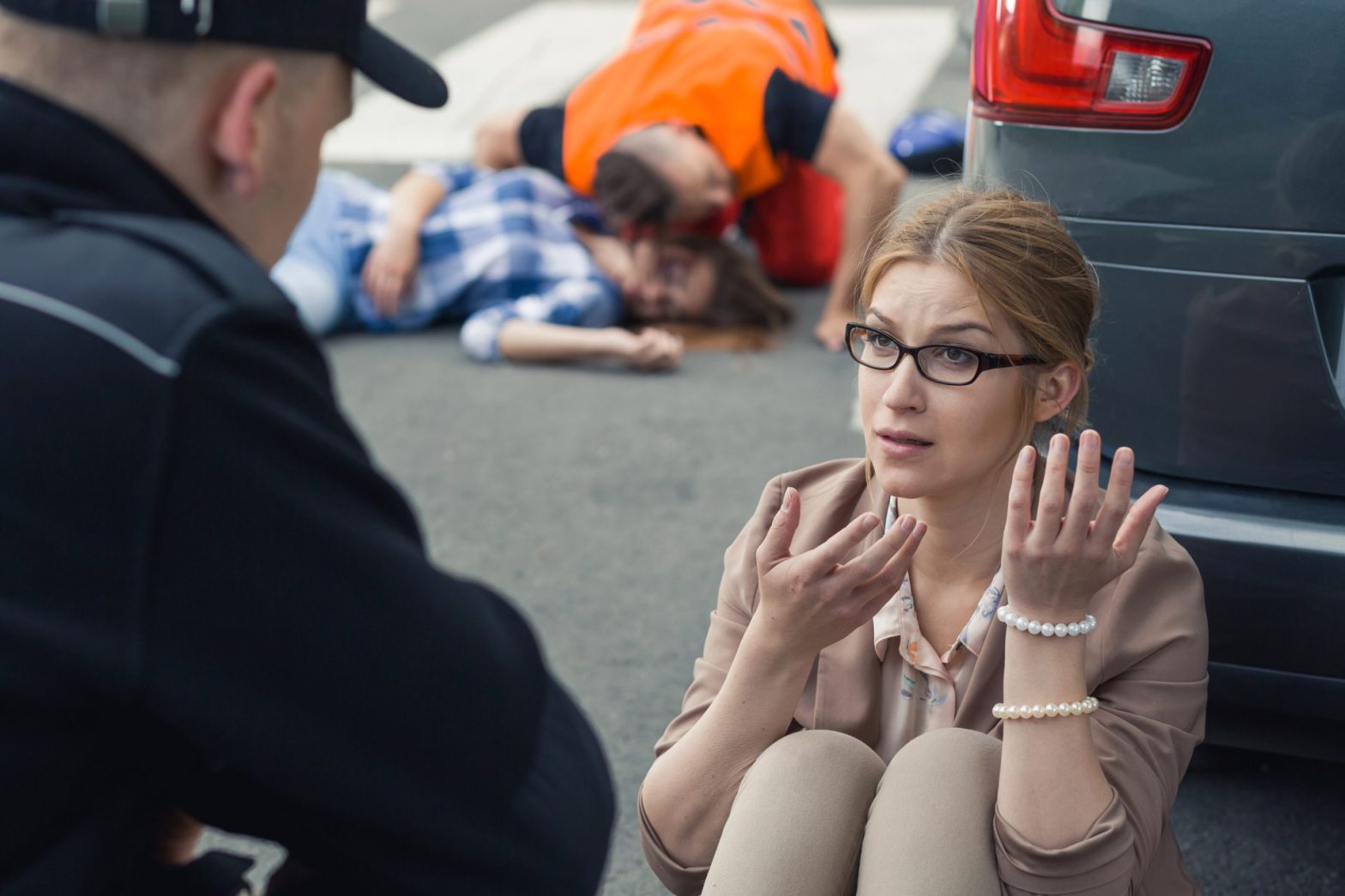Imagine a scenario where someone speeds through a crowded crosswalk, narrowly missing pedestrians, or a neighbor repeatedly burning trash in his backyard, with embers frequently landing on your property. These situations, and many others, may count as reckless endangerment. Fortunately, victims of reckless endangerment in NY can depend on the law to hold offenders accountable.
New York law recognizes that certain careless or dangerous behaviors, while not necessarily intended to cause harm, can create a substantial and unjustifiable risk of injury or even loss of life. Given the complexities that come with most reckless endangerment cases, hiring an attorney to handle your case is ideal.
Understanding Reckless Endangerment as a Victim
What does recklessly endangering mean? Well, reckless endangerment is not about someone getting hurt. Instead, it centers on the “creation of a significant risk” of harm. The law recognizes that even if no one is physically injured, the act of putting others at risk is a crime. This is an important distinction to grasp as a potential victim.
You don’t necessarily need to have suffered a physical injury for reckless endangerment to have occurred. Elements like the fear, the near-miss, and the potential for harm are equally relevant when considering whether someone acted recklessly.
Reckless Endangerment 2nd Degree
New York’s Penal (PEN) CHAPTER 40, PART 3, TITLE H, ARTICLE 120, SECTION 120.20, governs reckless endangerment in the second degree. While this is the less serious of the two degrees of reckless endangerment, it’s still a significant offense. You might be a victim of this if someone engages in conduct that creates a “substantial risk of serious physical injury.”
The key elements of reckless endangerment in the second degree include:
- Reckless conduct. This means the offender was aware of a substantial and unjustifiable risk and consciously disregarded it. It’s more than just negligence or carelessness, and it implies a certain level of culpability, a knowing disregard for the potential consequences of their actions.
- Substantial risk of serious physical injury. “Serious physical injury” is an injury that creates a substantial risk of death, or which causes serious and protracted disfigurement, protracted impairment of health, or protracted loss or impairment of the function of any bodily organ. Consequently, the reckless conduct must have the potential to cause this level of harm.
- Another person. There must be a risk to another individual or individuals. Reckless conduct that only endangers the person committing the act does not fall under this statute.
Examples of second-degree reckless endangerment include:
- A driver repeatedly runs red lights. Even if he does not hit anyone, the substantial risk of a serious accident and injury to other drivers and pedestrians is evident.
- Someone discharges fireworks irresponsibly in a crowded park, with the risk of burns or other injuries to those in the vicinity.
- A landlord knowingly fails to repair a dangerous structural issue in a building, creating a risk of collapse and injury to tenants.
- An individual operates heavy machinery in a way that disregards the safety of those around.
If you’ve experienced any of these situations, or similar ones, where someone’s reckless actions put you at significant risk of serious injury, know that it could be a violation of NY Penal Law reckless endangerment in the second degree.
Reckless Endangerment 1st Degree
Reckless endangerment in the first degree is a more serious charge, reflecting a higher level of culpability and greater potential for harm. You might be a victim of first-degree reckless endangerment if someone engages in reckless conduct that creates a “grave risk of death.”
The key difference between the two is the level of risk involved. While second-degree involves a substantial risk of “serious physical injury,” first-degree involves a “grave risk of death.” This implies a situation where the magnitude of the conduct is significantly higher, and the potential for a fatal outcome is more pronounced.
Examples of first-degree reckless endangerment include:
- Someone fires a gun into a crowd of people. Despite no one being hit, the act creates a grave risk of someone being killed.
- A heavily intoxicated individual drives a vehicle at high speeds in a residential area, weaving in and out of traffic, where the potential for a fatal collision is very high.
- Someone intentionally releases a dangerous and toxic substance into a public space, creating a serious risk of death or serious illness.
- An arsonist sets fire to an occupied building, demonstrating a grave disregard for its occupants’ lives.

Specific Types of Reckless Endangerment
New York law addresses reckless endangerment in specific contexts, often leading to enhanced charges or highlighting particular dangers.
- Reckless driving, reckless endangerment with a vehicle, or fleeing a police officer in a motor vehicle. Governed by Vehicle & Traffic (VAT) CHAPTER 71, TITLE 7, ARTICLE 33, SECTION 1212.
- Aggravated unlicensed operation with recklessness. Governed by Vehicle & Traffic (VAT) CHAPTER 71, TITLE 5, ARTICLE 20, SECTION 511.
- Governed by Penal (PEN) CHAPTER 40, PART 3, TITLE I, ARTICLE 150, SECTION 150.01.
- Reckless endangerment of a child. This can fall under Penal (PEN) CHAPTER 40, PART 3, TITLE O, ARTICLE 260, SECTION 260.10 (Endangering the welfare of a child), or the general reckless endangerment statutes (§ 120.20 or § 120.25).
- Reckless endangerment of property. Governed by Penal (PEN) CHAPTER 40, PART 3, TITLE I, ARTICLE 145, SECTION 145.25.
Reckless Endangerment With a Deadly Weapon
When it comes to reckless endangerment with a firearm or deadly weapon, a first-degree reckless endangerment charge usually applies. There might also be a potential for additional firearm-related charges, like:
- Criminal possession of a weapon in the second degree.
- Criminal possession of a weapon in the third degree.
- Menacing in the first or second degree.
- Reckless assault.
Reckless Endangerment Sentencing
As a victim, knowing the consequences of reckless endangerment for the person who endangered you can be part of the process of seeking justice and accountability.
- Reckless endangerment in the second degree. This is a Class A misdemeanor, and it carries a potential sentence of up to one year in jail, as well as fines and other penalties like probation or community service.
- Reckless endangerment in the first degree. As a Class D felony, reckless endangerment in the first degree carries a potential sentence of up to seven years in state prison, along with fines and other penalties.
- Reckless endangerment of property. Reckless endangerment of property is a Class B misdemeanor. It comes with a maximum of three months in jail and/or a $500 fine, but the sentencing can extend to one year in some scenarios.
Keep in mind that these are the sentencing guidelines for reckless endangerment in New York State, and the actual sentence imposed by a judge depends on various factors, including the specifics of a case, a defendant’s prior criminal history, and any mitigating or aggravating circumstances.
What to Do If You Are a Victim of Reckless Endangerment
If you believe someone has acted recklessly in a way that put you or others at substantial risk of serious injury or death, or recklessly endangered your property in a way that threatened safety, this is what you need to do.
- If the reckless behavior is ongoing, remove yourself from the situation and ensure you are in a safe place.
- Reporting reckless endangerment to the police is crucial. Even if you are unsure whether a crime has been committed, it’s essential to have the incident documented.
- If it is safe to do so, try to gather any evidence that supports your account. This could include photos, videos, witness contact information, or any other documentation of the event.
- If you have suffered any injuries, no matter how minor they seem, seek medical attention promptly. This not only ensures your well-being but also creates a record of any physical harm.
- Speak to an attorney experienced in criminal law or personal injury to learn of your rights and options.
- If the police decide to investigate, cooperate fully and provide them with any information they request.
- Keep a detailed record of all interactions with law enforcement, medical professionals, and any other relevant parties.
Conclusion
Being the victim of reckless endangerment can be a frightening and unsettling experience. Fortunately, legal help for victims of reckless endangerment in New York is easy to find, and you should ideally reach out to a reputable law firm at the earliest. Then, by understanding your rights and the relevant laws, you can take informed steps to address the situation and get the justice you deserve.

